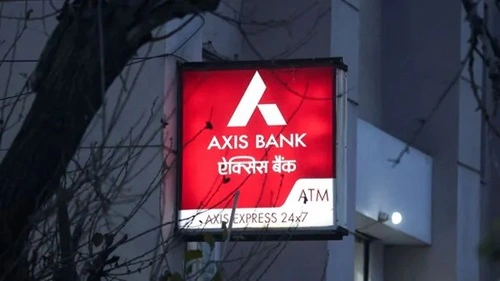Axis Bank, one of India’s largest private sector banks, has established itself as a prominent player in the country’s banking sector. Founded in 1993 as UTI Bank, Axis Bank has grown steadily over the years, offering a comprehensive suite of financial products and services to retail, SME, and corporate clients. Known for its strong digital presence, extensive branch network, and focus on customer service, Axis Bank is well-positioned in India’s competitive banking industry. However, it also faces challenges such as intense competition, regulatory scrutiny, and macroeconomic uncertainties. This SWOT (Strengths, Weaknesses, Opportunities, Threats) analysis delves into Axis Bank’s current position and future outlook in the evolving financial sector.

Strengths
1. Strong Brand Equity and Market Position:
Axis Bank is one of India’s most trusted and recognized private sector banks. With a presence across various financial services, including retail banking, corporate banking, and wealth management, Axis Bank has built a loyal customer base. Its brand equity and solid reputation make it a preferred bank for millions of Indian consumers, which provides a significant advantage in a highly competitive market.
2. Robust Digital Banking Infrastructure:
Axis Bank has been a leader in digital banking, investing heavily in technology to provide seamless and efficient services to its customers. With platforms like Axis Mobile, Internet Banking, and the Axis Bank website, the bank has made banking accessible and convenient for customers. Its digital transformation initiatives, including artificial intelligence (AI) and machine learning (ML) applications, provide a superior user experience, enhancing customer engagement and loyalty.
3. Comprehensive Product and Service Portfolio:
Axis Bank offers a wide range of products and services, including loans, credit cards, savings and deposit accounts, insurance, and investment solutions. Its diversified portfolio allows it to cater to various customer needs, from retail and small businesses to large corporations. This comprehensive range of services enables Axis Bank to cross-sell products effectively, increasing revenue per customer and enhancing customer loyalty.
4. Strong Retail and Corporate Banking Network:
With over 4,500 branches and 11,000 ATMs across the country, Axis Bank has a vast distribution network that allows it to reach customers across urban, semi-urban, and rural areas. Its retail network, combined with strong corporate and institutional relationships, has made Axis Bank a preferred partner for both individuals and businesses. This extensive network supports its brand presence, revenue generation, and customer acquisition efforts across diverse demographics.
Weaknesses
1. High Non-Performing Assets (NPAs):
Axis Bank, like many Indian banks, has struggled with non-performing assets (NPAs) in recent years, particularly in its corporate loan portfolio. While the bank has made strides in reducing NPAs through recovery efforts and stricter credit controls, bad loans remain a challenge. High NPAs impact profitability, strain resources, and can affect investor confidence, posing a significant obstacle to the bank’s financial health.
2. Dependence on Interest Income:
Axis Bank derives a large portion of its revenue from interest income, which makes it vulnerable to changes in interest rates and economic cycles. During periods of low interest rates or economic downturns, the bank’s profitability can be affected. Although Axis Bank has been working to diversify its income sources by growing its fee-based and wealth management businesses, interest income remains a substantial part of its revenue stream.
3. Relatively High Cost-to-Income Ratio:
Axis Bank’s cost-to-income ratio has historically been higher than some of its private sector peers, driven by expenses related to branch network expansion, employee costs, and investment in digital infrastructure. A high cost-to-income ratio can weigh on profitability, and reducing these costs while maintaining quality service and growth is a challenge. Operational efficiency improvements are needed to align with industry standards and improve margins.
4. Limited Global Presence Compared to Competitors:
While Axis Bank has a robust domestic network, its international presence is limited compared to some of its competitors. This restricts its ability to serve a broader customer base, particularly in regions with a significant Indian diaspora, such as the Middle East, the United States, and Southeast Asia. Limited global reach can also hinder Axis Bank’s ability to diversify revenue streams and capture growth in international markets.
Opportunities
1. Growing Demand for Digital and Contactless Banking:
The COVID-19 pandemic accelerated the adoption of digital banking, creating an opportunity for Axis Bank to strengthen its digital footprint further. With a strong foundation in digital banking, Axis Bank can enhance its offerings, such as mobile banking, digital lending, and contactless payments, to attract tech-savvy customers. Leveraging data analytics to offer personalized services and improving customer experience will be critical for gaining an edge in the digital banking space.
2. Expansion in Wealth Management and Insurance:
The wealth management and insurance sectors in India are growing rapidly, driven by rising incomes, awareness of financial planning, and increasing demand for health and life insurance products. Axis Bank’s subsidiaries, such as Axis Securities and Axis Mutual Fund, position it well to capitalize on this trend. By offering comprehensive wealth management and insurance solutions, Axis Bank can attract affluent clients, diversify its revenue streams, and increase fee-based income.
3. Growth in Retail and SME Lending:
With increasing urbanization and a growing middle class, there is significant demand for retail and SME loans, including personal loans, home loans, and business loans. Axis Bank is well-positioned to capture this demand by expanding its retail and SME lending portfolios, particularly in Tier 2 and Tier 3 cities where financial inclusion is rising. Expanding in this segment can enhance Axis Bank’s loan book, increase interest income, and reduce reliance on corporate loans.
4. Financial Inclusion and Expansion into Rural Markets:
The Indian government’s focus on financial inclusion presents an opportunity for Axis Bank to expand its reach in rural and semi-urban areas. By offering affordable and accessible banking solutions to underserved regions, Axis Bank can attract new customers and support the country’s financial inclusion goals. Developing tailored products and leveraging government programs can help Axis Bank build a loyal customer base in rural areas.
Threats
1. Intense Competition from Public and Private Sector Banks:
Axis Bank operates in a highly competitive market, facing challenges from both public sector banks like State Bank of India and private banks like HDFC Bank and ICICI Bank. These competitors have strong customer bases and extensive resources, which intensifies competition. Additionally, fintech companies and digital-first banks are offering user-friendly, technology-driven solutions that attract younger customers, putting further pressure on Axis Bank to innovate and retain its market share.
2. Regulatory Risks and Compliance Costs:
Axis Bank is subject to stringent regulatory oversight by the Reserve Bank of India (RBI) and other regulatory bodies, which govern areas like lending practices, capital adequacy, and customer protection. Changes in regulations or stricter compliance requirements can increase operational costs and impact Axis Bank’s profitability. Compliance with evolving regulations related to data privacy, anti-money laundering, and digital security is crucial for the bank’s long-term success.
3. Economic Slowdowns and Rising Inflation:
Axis Bank is vulnerable to economic cycles, and an economic slowdown can reduce demand for loans and increase the risk of defaults. Economic uncertainties, such as inflationary pressures, also impact consumer purchasing power and loan repayment capabilities. Rising inflation may lead to higher interest rates, affecting Axis Bank’s profitability, especially if demand for credit declines in a high-interest-rate environment.
4. Cybersecurity Threats and Digital Risks:
With the increasing reliance on digital channels, Axis Bank faces significant cybersecurity threats, such as data breaches, hacking attempts, and digital fraud. Cybersecurity incidents can compromise customer data, damage the bank’s reputation, and result in regulatory penalties. Investing in robust cybersecurity measures and protecting customer data is essential to maintain trust and ensure uninterrupted service in an increasingly digital environment.
Future Outlook
The future outlook for Axis Bank is promising, with significant growth potential driven by digital banking, financial inclusion, and expanding wealth management. India’s growing economy, urbanization, and rising disposable incomes offer a fertile ground for Axis Bank to increase its retail and SME lending, wealth management, and insurance segments.
Axis Bank’s strong digital infrastructure provides a competitive edge in the rapidly digitizing banking sector. Expanding digital lending, leveraging AI and machine learning for personalized customer experiences, and enhancing online and mobile platforms will help the bank attract and retain tech-savvy customers. Additionally, expanding its digital banking capabilities to underserved rural and semi-urban regions can drive financial inclusion, build brand loyalty, and enhance Axis Bank’s reputation as a trusted banking partner.
To capitalize on the increasing demand for wealth management and insurance products, Axis Bank can strengthen its offerings through its subsidiaries and partnerships. Expanding its wealth management division and developing new products tailored to India’s affluent segment can provide significant revenue growth and diversify its income streams beyond traditional interest income.
However, Axis Bank must address certain challenges to maintain long-term stability and profitability. Improving asset quality and managing NPAs through enhanced risk assessment practices and prudent lending decisions will be essential for financial health. Streamlining operations, reducing the cost-to-income ratio, and enhancing efficiency will also be critical in aligning Axis Bank with industry standards and improving margins.
Axis Bank’s focus on cybersecurity and regulatory compliance is essential to mitigate risks associated with digital banking. Investing in data protection, robust cybersecurity protocols, and proactive risk management will ensure a secure and reliable banking experience, safeguarding customer trust.
In conclusion, Axis Bank’s strengths in brand equity, digital banking, and a comprehensive product portfolio provide a solid foundation for growth in India’s competitive banking sector. By leveraging opportunities in retail lending, digital transformation, and wealth management, Axis Bank can strengthen its market position and adapt to evolving consumer preferences. With a strategic focus on innovation, operational efficiency, and customer-centricity, Axis Bank is well-positioned to navigate challenges and capture growth in India’s dynamic financial landscape.

